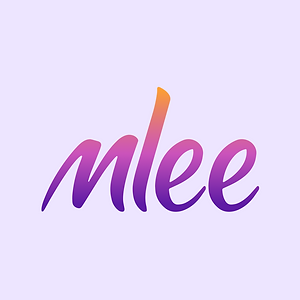Healthcare with More Love

Overview
More Love Inc. is a company with 20 years of experience in healthcare staffing. It operates two brands: MLR.org, which focuses on staffing services, and mlee, a software development startup.
The company is developing 3 distinct product lines under mlee: a job board, a vendor management system (VMS), and a customer relationship management (CRM) platform—each designed to streamline operations and drive innovation in the healthcare sector.
Role
-
Senior UX Designer | Mar 2025 - May 2025
-
UX Designer | Feb 2025 - Mar 2025
Responsibility
-
Defining & Ideating
-
Prototyping & Iterating
-
Maintained 3 Product Lines
-
Led the Design for MLR VMS
Tools
Figma, FigJam, Pulse CRM
Duration
3 months


Empathy
Industry Background
Product Line
Product Goal
My journey with mlee
Destiny begins here
My Daily Work
I joined the team as a UX designer, excited to dive in. Just a month later, the other designer left — and suddenly, I was the only one. I took on all 3 product lines, juggling everything from 0-to-1 brand-new products to major redesigns.
Every day was fast-paced and full of decisions. I quickly learned the rhythm of startup life and proved my value — within a month, I went from contractor to full-time.
Why mlee
In 2022, AI and healthcare were booming, and I was drawn to innovative work. Breaking into the healthcare industry with no medical background wasn’t easy — but I made it. The CEO loved my design style, and that opened the door.
Beyond product design, I also led the rebranding for MLR. Startups are full of surprises, but I’ve always enjoyed the creative journey.
Industry Background
What Makes Healthcare Staffing so Special?
High Qualification Barriers
Medical roles require licenses, degrees, and clinical experience, making hiring stricter than most industries.
Strict Hiring Standards
In addition to skills, strong cultural and team fit is essential for successful collaboration in healthcare settings.
Workforce Shortages
Critical roles like nurses and therapists face ongoing shortages, with high turnover and burnout rates.
Complex Employment Types
Beyond full-time roles, staffing includes per diem, travel nurses, and temporary contracts.
Geographic Imbalance
Rural areas lack talent as few professionals relocate, so they rely on temporary staff or travel nurses.
Irregular Schedules
24/7 hospital operations demand candidates who can adapt to rotating shifts and holiday work.
Product Line
3 different product lines serving the company

2024 Spring
Pulse CRM
Pulse was mlee’s first internal product—a staffing-focused CRM with an integrated call center. It aggregates data from multiple job platforms, serving as a centralized system to streamline operations and unify software management.

2024 Fall
mlee Job Board
mlee’s second product, designed to become the go-to job board for the healthcare industry. It serves both job seekers and employers, allowing recruiters and companies to post job listings directly.

2025 Spring
MLR Job Board & VMS
An AI-powered B2B SaaS vendor management system serving job seekers, contractors, hospitals, and staffing agencies. It provides tailored features based on user roles and brings greater transparency to the hiring process.

Define
User personas
User flow
Problem statement
Persona
4 Key Personas in Healthcare Staffing

Emily Johnson
Job Seeker
Looking for opportunities in healthcare facilities. Can browse and apply for jobs on the job board.

Kevin Lin
Contractor
A signed worker with a hospital or staffing agency. Still considered a type of job seeker with active assignments.

Sarah Mitchell
Facility HR
Directly hires staff for hospitals. Manages staff shortages and ensures new hires fit team culture and skill requirements.

David Clark
Recruiter
Matches qualified healthcare professionals to job openings. Verifies credentials and supports career alignment for candidates.
Problem Statement
How might we design an AI-powered SaaS platform that streamlines staffing across the healthcare industry, empowering job seekers, contractors, hospitals, and recruiting agencies to complete hiring and recruitment processes with greater efficiency and transparency, incorporating both a job board and a vendor management system?

Ideate
Project Scope
Product Philosophy
Design Challenges
Project Scope
What Problems Are We Solving?
In Scope
-
Develop an AI-powered SaaS platform for healthcare staffing.
-
Build a Job Board that enables job seekers to browse and apply for healthcare roles, while allowing employers and vendors to post and manage job listings.
-
Build a Vendor Management System (VMS) to manage agencies, hospitals, and contractors.
-
Support four user types: job seekers, contractors, hospitals, staffing agencies.
Out of Scope
-
Third-party background check integration.
-
Government database credential verification (only upload, not verify).
-
Compliance audits or HIPAA(Health Insurance Portability and Accountability Act) audit features.
-
Integration with external ATS (Applicant Tracking Systems) (unless explicitly scoped later).
-
Payroll and benefits management beyond invoice handling.

Challenges
Navigating from 0 to 1 is filled with challenges,
and I'm committed to finding a path that aligns with the organization.

Prototype
MLR Branding
MLR Web Design
Product Design
MLR Promotional Video

Special Thanks
This promotional video for MLR's VMS is a true reflection of our team’s collective effort. I was responsible for the prototype screens, our COO provided the voiceover, and our marketing lead handled the video editing. This project holds deep significance for all of us — it wouldn't have been possible without every team member’s contribution. The video is available on MLR’s official website.

MLR Branding
High fidelity prototyping
Back in 2017, MLR’s CEO personally designed the original logo. As the company evolved to focus on healthcare staffing, branding took a backseat to operational growth. By the time mLee founded in 2024, the CEO was again directly involved, resulting in a well-defined brand and design system.
When I joined the team and began developing the branding for MLR, I intentionally drew visual references from mlee’s design—such as its use of gradients—to establish brand continuity.
This approach ensured MLR felt like a natural extension of the mlee ecosystem while maintaining its own distinct identity.
MLR Branding
MLR Color – Breaking the B2B Norm
When people think of B2B platforms, the default color palette is often muted blues—safe, corporate, and conventional. But our CEO made a bold and intentional choice: to use vibrant, pop-inspired colors to represent MLR.
His belief is that healthcare staffing is fundamentally about people—connection, warmth, and trust—not cold transactions. He sees color not just as aesthetic, but as emotional communication.
I deeply resonated with his perspective. This color direction injected life into the brand, setting MLR apart from traditional B2B platforms and reinforcing our mission to humanize staffing in healthcare.


MLR Web design
My Starting Point into Healthcare Staffing
Before joining mlee, my staffing knowledge came mostly from LinkedIn and market trends—but I had no hands-on experience in the healthcare industry. Designing the MLR website marked my first deep dive into this space.
Through close collaboration with the marketing team and studying their content, I quickly became familiar with healthcare-specific terms like disciplines, shift types, and state-by-state demand. I also gained insight into the staffing challenges and priorities for clinicians, hospitals, and recruiters.
Each webpage was more than a UI exercise—it was a window into the business. Designing these pages helped me understand how every feature aligned with user needs, and how each touchpoint supported the broader strategy. Completing them gave me not just a sense of accomplishment, but a new layer of industry knowledge.
MLR Web design
Using Visual Design to Build Trust
Healthcare staffing is deeply rooted in human connection and professionalism. At the same time, we wanted the product to feel warm and engaging. To achieve this, we prioritized high-quality visuals that reflect both trust and brand personality.
With over 20 years in the industry, our marketing team occasionally arranges photoshoots with real physicians and nurses. These images not only help hospitals build their brand but also give mlee and MLR unique, authentic materials—far more impactful than generic stock photos.
This process fosters genuine trust and lasting relationships between us and our partners.


MLR Web design
Design System Across Three Product Lines
When I joined the team, the original designer for our first product, Pulse, had already left. One month later, the mlee designer also departed, and I became the sole designer responsible for maintaining and evolving the design systems of all 3 product lines.
Since the mlee and MLR VMS platforms share the same job board infrastructure, I ensured that any new designs delivered for the job board maintained a consistent layout and user experience across both products. Where possible, I also optimized and refined existing components to improve usability.
To preserve brand distinction, I carefully applied each brand's unique color palette, typography, and graphic style—balancing system consistency with visual independence.
Product Design
Leanest Customer-Ready Feature Set
Building a full-scale job board and VMS system is costly for an early-stage startup. To generate revenue while supporting ongoing development, our first customer-facing product was a customizable career page template.
Leveraging the existing mlee and MLR job board components, the client’s career page featured a dedicated job listingsection on the left and a city introduction on the right. In the initial version, we managed job postings on behalf of the clients.
In future iterations, the login button in the top-right corner will lead users into the VMS portal, where job seekers can manage applications and hospitals can oversee job postings based on their account type.


Product Design
Vendor Management System (VMS)
The VMS (Vendor Management System) was one of the most critical parts of my design work. I took on the responsibility of designing it from 0 to 1. At the time, the only direction we received from the CEO was, “We need to build a VMS,” without a clear definition of what that meant. Our starting point became competitor research to define what a VMS should be.
Through this process, we shaped our own understanding:
-
On the B2B side, the VMS is a platform where hospitals and staffing agencies can manage their relationships and ensure compliance.
-
On the B2C side, hospitals can handle contractor invoices and store contract documents — all in one place to ensure centralized management and transparency.

Reflection
Takeaway
Takeaway
Design as philosophy, not just product

Special Thanks
As someone who’s worked as a solo designer across 9 startups over the past 5 years, I’m used to doing a bit of everything alone. So, having a team full of great, reliable, and kind experts from different industries? It’s been nothing short of magical. We respect each other’s crafts. We understand each other’s efforts.
I wrote 8 LinkedIn recommendations for my great teammates at mlee Healthcare.
Check out the LinkedIn post here.
True heroes recognize one another. 🫡
